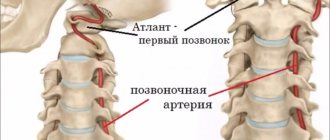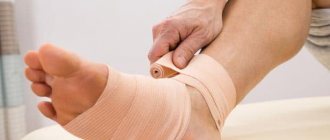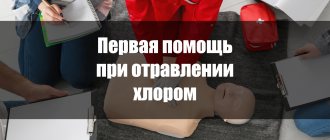Providing assistance to the patient at home until the ambulance arrives
The ability to orientate yourself in a timely manner and provide adequate support to the patient before the ambulance arrives greatly increases his chances of survival.
First aid for myocardial infarction should be provided immediately.
Algorithm of actions
- Immediately call an ambulance (in a conversation with the dispatcher, formulate the symptoms as clearly as possible, voice the suspicion of MI, so that a specialized cardiology or resuscitation team can respond to the call).
- Provide the patient with a semi-sitting position (the elevated position of the upper half of the body reduces the preload on the heart).
- Try to reassure the patient (emotional and physical stress increases the release of vasoconstrictors, which increases myocardial ischemia and increases its oxygen demand).
- Provide oxygen flow (open windows, doors, turn on air conditioning).
- Remove outer clothing and loosen all elements that compress the body (tie, belt, necklace, etc.).
- If possible, measure blood pressure and count pulse . For severe tachycardia, take 1 tablet of Anaprillin; for hypertension, take 1 tablet of Captopril.
- Give "ASA" (150-325 mg) or "Clopidogrel" (100 mg) . The effect will occur faster if the tablets are chewed.
- Give 1 tablet sublingually . "Nitroglycerin" . Repeat the dose every 5 minutes (but no more than 3 doses).
- Before the ambulance arrives, it is prohibited to take non-narcotic analgesics!
If the patient suddenly loses consciousness, stops breathing and cardiac arrest occurs, it is necessary to perform cardiopulmonary resuscitation before the doctors arrive:
- position the patient lying on his back, tilt his head back, place a cushion under his neck, push out the lower jaw (prevention of obstruction of the airways with the tongue);
- check the pulse in the carotid artery;
- perform indirect cardiac massage and perform artificial respiration with a frequency of 30:2 if the procedure is performed by one person, or 15:1 if two people perform the procedure. Pressing should be done quickly (100 per minute), rhythmically and with sufficient force to ensure cardiac output;
- check every 2-3 minutes to see if a pulse appears.
Rubric “Conversation with a specialist” Acute myocardial infarction - symptoms and first aid
The joint article was prepared by three specialists at once - cardiologist, anesthesiologist-resuscitator of Health Academy LLC Konstantin Nikolaevich Bozhesku, functional diagnostics specialist of Health Academy LLC (formerly an employee of the Nizhny Tagil emergency medical service team), Gennady Andreevich Puzanov and paramedic of the highest category of the team intensive care of the State Budgetary Healthcare Institution SO "City Emergency Medical Care Station of Nizhny Tagil" by Dmitry Vasilievich Subbotin.
Timely pre-medical and emergency medical care during an attack of myocardial infarction in most cases is the key to the patient’s successful recovery. It is the absence of such activities that often becomes the cause of death even for young people who have encountered this acute cardiac pathology. Cardiologists recommend that all patients with coronary artery disease know the first signs of myocardial infarction and the rules for providing first aid. It is also important to know what treatment the patient will be prescribed in the hospital in order to prepare for a conversation with the attending physician and ask him the necessary and important questions.
When is it necessary to start performing first aid? The answer to this question is always clear – immediately. That is, already when the patient began to show the first signs of myocardial infarction. Its onset is signaled by the following typical symptoms:
intense chest pain; irradiation of pain to the left arm, shoulder blade, teeth or neck area; severe weakness; fear of death and severe anxiety; cold clammy sweat; nausea. With atypical forms of heart attack, the patient may experience other symptoms:
stomach ache; digestive disorders; vomit; dyspnea; suffocation, etc. First aid in such situations should begin with calling an ambulance. When talking with the dispatcher of this service, you must:
report the symptoms observed in the patient; express your assumption about the possibility of myocardial infarction; ask to send a team of cardiologists or resuscitators. After this, you can begin to carry out those activities that can be performed outside the medical institution.
First aid The patient must be carefully placed on his back and given the most comfortable position (semi-sitting or a cushion placed under the back of his head).
Ensure a flow of fresh air and the most comfortable temperature conditions. Remove clothing that interferes with free breathing (tie, belt, etc.).
Convince the patient to remain calm (especially if the patient exhibits signs of motor agitation). Talk to the victim in a calm and even tone, do not panic or make sudden movements.
Give the patient a Nitroglycerin tablet under the tongue and a sedative (Corvalol, motherwort tincture or valerian).
Measure blood pressure. If the pressure is not more than 130 mm. rt. Art., then it is advisable to re-take Nitroglycerin every five minutes. Before the doctors arrive, you can give 2-3 tablets of this drug. If the first dose of Nitroglycerin caused a severe throbbing headache, then the dosage should be reduced to ½ tablet. When using this drug in the form of a spray, its single dose should be 0.4 mg. If the patient's first dose of Nitroglycerin caused a sharp decrease in blood pressure, then this drug should not be used further.
Give the patient a crushed Aspirin tablet (to thin the blood).
Count the patient's pulse. If the heart rate is no more than 70 beats/minute and the patient does not suffer from bronchial asthma, then he can be given one of the beta blockers (for example, Atenolol 25-50 mg).
You can put a mustard plaster on the area where the pain is located (remember to keep an eye on it so that there is no burn).
During the provision of first aid, the patient’s condition may be complicated by the following conditions:
fainting; heart failure. If fainting occurs, it is necessary to remain calm and ensure the normal functioning of the respiratory system. The patient must be placed in a horizontal position, a cushion placed under his shoulders and dentures (if any) removed from the mouth. The patient's head should be in a tilted position, and if there are signs of vomiting, it should be turned to the side.
In case of cardiac arrest, artificial respiration and chest compressions must be performed before the medical team arrives. The frequency of compressions on the midline of the chest (heart area) should be 75-80 per minute, and the frequency of blowing air into the airways (mouth or nose) should be about 2 breaths every 30 compressions on the chest.
Emergency medical care and principles of treatment in a hospital Emergency medical care for myocardial infarction begins with the relief of acute pain. For this, various analgesics (Analgin) and narcotic drugs (Promedol, Morphine, Omnopon) in combination with Atropine and antihistamines (Diphenhydramine, Pipolfen, etc.) can be used. For a faster effect, painkillers are administered intravenously. Seduxen or Relanium is also used to eliminate the patient's anxiety.
Then, to assess the severity of the heart attack, the patient is given an electrocardiogram. If hospitalization is possible within half an hour, the patient is immediately transported to a medical facility. If it is impossible to transport the patient to the hospital within 30 minutes, thrombolytics (Alteplase, Purolase, Tenecteplase) are administered to restore coronary blood flow.
A stretcher is used to transfer the patient to the ambulance, and during transportation to the intensive care unit, humidified oxygen is inhaled. All these measures are aimed at reducing the load on the heart muscle and preventing complications.
After arrival at the intensive care unit, to eliminate pain and agitation, the patient is given neuroleptanalgesia with Talamonal or a mixture of Fentanyl and Droperidol. In case of a prolonged angioedema attack, the patient can be given inhalation anesthesia using a gaseous mixture of nitrous oxide and oxygen.
Next, the patient is prescribed the following medications:
Nitroglycerin, Isosorbide dinitrate, Isoket - in the acute period of a heart attack, these drugs are used to reduce the myocardial oxygen demand, first they are administered intravenously, and after stabilizing the patient's condition - orally and sublingually.
Beta blockers (Anaprilin, Inderal, Obzidan, Propranolol) - help slow the heart rate and reduce the load on the heart.
Antiplatelet agents (Aspirin) thin the blood and prevent the development of a new heart attack.
Anticoagulants (Heparin) - used to prevent recurrent heart attacks and reduce blood clotting.
ACE inhibitors (Ramipril, Captopril, Enalapril, etc.) are used to lower blood pressure and reduce the load on the heart.
Sedative and hypnotic drugs (Diazepam, Oxazepam, Triazolam, Temazepam, etc.) are used when it is necessary to limit the patient’s activity and for sleep disorders.
Antiarrhythmic drugs (Novocainamide, Rytmilen, Lidocaine, Difenin, Amiodarone, etc.) are used for cardiac arrhythmias to stabilize cardiac activity and reduce the load on the myocardium.
Other pharmacological drugs can be used to treat myocardial infarction, since the tactics of drug treatment of the patient depends on the general condition of the patient and the presence of other pathologies (diseases of the kidneys, blood vessels, liver, etc.).
Also, for the treatment of myocardial infarction, modern medicine uses various instrumental, highly effective techniques to restore coronary blood flow:
balloon angioplasty; coronary artery bypass grafting. Such surgical techniques allow patients with severe forms of myocardial infarction to avoid serious complications and prevent the high risk of mortality from this cardiac pathology.
Motor activity of a patient with myocardial infarction All patients with myocardial infarction are advised to limit their physical activity, since this regime contributes to a more rapid replacement of the infarction area with scar tissue. In the first days, the patient must observe strict bed rest, and from 2-3 days, in the absence of complications and signs of heart failure, his motor regimen begins to gradually expand. Initially, he is allowed to sit on a bedside chair 1-2 times a day and sit on it for about 15-30 minutes (the frequency and duration of these actions is determined by the doctor).
These days the patient can eat on his own. He also needs to be washed and cleaned, and he must use a bedpan to defecate (the use of a bedside toilet seat is permissible only with the permission of a doctor and only for patients with a stable heart rhythm).
Starting from 3-4 days, the patient is allowed to sit on a chair for about 30-60 minutes twice a day. In case of an uncomplicated heart attack, the patient is allowed to start walking between 3-5 days (this time is determined by the doctor). The time of such walking and the distances over which the patient moves increase gradually.
In an uncomplicated form of myocardial infarction, the patient is discharged from the hospital on days 7-12, and in complicated cases it can take place only after 3 weeks or more. In the future, the patient must undergo a course of rehabilitation, which can be performed in specialized institutions or at home. During this period, the intensity and duration of physical activity gradually increases depending on health indicators.
Nutrition of the patient during myocardial infarction In the first week after myocardial infarction, the patient is recommended to have a low-calorie diet with limited salt, animal fats, liquids, foods with nitrogenous substances, excessively coarse fiber and cholesterol. The diet should include foods that are rich in lipotropic substances, vitamin C and potassium salts.
In the first 7-8 days, all dishes should be pureed. Food is taken in small portions 6-7 times a day.
The diet may include the following foods and dishes:
wheat bread crackers; semolina, oatmeal, buckwheat and rice cereals; lean veal; low-fat varieties of fish; chicken meat; protein steam omelette; low-fat cheese; fermented milk drinks; butter; salad of fresh grated carrots and apples; vegetable soups; boiled beets and cauliflower; pureed fruit; compotes and fruit drinks; rosehip decoction; weak tea; honey. During this period, the following foods and dishes are prohibited:
dough products (pancakes, donuts, cakes, pies); smoked and marinated dishes; pickles; fried foods; sausages; fatty dairy products; salty and spicy cheeses; caviar; fat meat; boiled and fried eggs; fish and mushroom broths; pasta; cooking fat; mushrooms; legumes; sorrel; turnip; grape; tomato juice; spices; chocolate; natural coffe. 2-3 weeks after a heart attack, the patient is recommended the same set of products and list of restrictions, but the food may no longer be pureed, prepared without adding salt and taken about 5 times a day. Subsequently, the patient's diet expands.
Remember! Myocardial infarction is a serious and dangerous pathology that can cause many serious complications and even death of the patient. Be sure to follow all the rules for providing first aid during an attack of this acute condition, call an ambulance in a timely manner and follow all the doctor’s recommendations during treatment in a hospital.
You can make an appointment with a cardiologist, as well as undergo an electrocardiogram at our Medical Center. Make an appointment by phone 8(3435) 230-500
We care about you!
Always yours, Medical
Pre-hospital emergency room
The standard for the arrival of an EMT team in the city is 10 minutes, outside the city limits - 20 minutes after registering a call with the dispatch service. If we take into account weather conditions, the epidemiological situation and the traffic situation, it is possible that the time may be exceeded (no longer than 10 minutes).
According to the protocol, the algorithm of the team’s actions upon arrival to the patient includes:
- Anamnesis collection (if possible).
- If necessary, perform resuscitation measures (ventilation, chest compressions, defibrillation).
- Conducting an examination and physical examination to assess the condition of the cardiovascular and respiratory systems.
- Registration of 12 leads ECG with repeat after 20 minutes.
Pulse oximetry (if saturation is below 95% - oxygen support by mask or through nasal cannulas 3-5 l/min.).- Determine the level of troponins I, T in the blood (if a portable test is available).
- Providing venous access.
- Actually emergency medical care:
- Nitroglycerin 0.5-1 mg every 10 minutes. In case of severe pain, intravenous drip administration under the control of SBP (not lower than 90 mm Hg);
- relief of an anginal attack with narcotic analgesics. Preferably, Morphine 2-5 mg every 10-15 minutes until the pain stops (total dose not exceeding 20 mg);
- "ASA" 150-325 mg chewed, if the patient did not take it before the ambulance arrived;
- conducting dual antiplatelet therapy - Ticagrelor 180 mg, in its absence, Clopidogrel is prescribed at a dose of 300 mg;
- short-acting beta blockers - Propranolol, Metoprolol;
- reduce the load on the myocardium by lowering blood pressure and correcting hemodynamic disturbances.
If possible, it is recommended to carry out thrombolysis therapy TLT (streptokinase, alteplase, actilyse) at the prehospital stage. If thrombolysis can be carried out within 2 hours from the onset of ischemic changes (optimally within 60 minutes), this can interrupt the development of necrosis during MI, reduce the affected area and significantly reduce mortality. TLT is not effective if more than 12 hours have passed since the onset of the painful attack. Also, the procedure is not performed in the presence of absolute contraindications: intracranial bleeding or hemorrhagic stroke over the past 3 months, malignant brain tumor, abdominal aortic aneurysm with a tendency to dissection, bleeding from the gastrointestinal tract during the last month, disorders of the hemostatic system.
All patients with ACS are hospitalized in the intensive care unit of a specialized cardiology hospital with the ability to perform emergency angiography and reperfusion interventions.
What determines the success of providing first aid to a patient with myocardial infarction?
The quality of first aid provided to a patient depends on many factors:
- knowledge of the person providing assistance, the algorithm of actions in case of a heart attack, the ability to perform resuscitation actions;
- time elapsed from the attack to the onset of actions;
- medication and instrumental support (tonometer, Nitroglycerin, Aspirin);
- the staffing of ambulance teams with the necessary equipment, medications, and personnel qualifications;
- distance from specialized cardiology departments.
There are also factors that aggravate the course of a heart attack, and thereby reduce the chances of success:
- age over 70 years;
- concomitant pathology (diabetes mellitus, obesity, kidney pathology, widespread atherosclerosis, hypercholesterolemia, hypertension);
- painless onset of ischemia or atypical clinical picture;
- extensive focus of necrosis (transmural MI) with cardiogenic shock;
- the occurrence of severe arrhythmias and cardiac conduction disorders.
Why does myocardial infarction develop?
Our heart is a tireless worker. In one minute it pumps more than five liters of blood and makes about one hundred thousand beats. The heart performs the most important functions for the human body:
- due to rhythmic contractions, it ensures blood flow through the blood vessels;
- saturates organs and tissues with oxygen;
- removes carbon dioxide and other harmful substances from the body.
With the development of myocardial infarction, the heart loses its ability to function normally, which often leads to disability and death.
The main cause of myocardial infarction is atherosclerosis, a chronic vascular pathology caused by impaired lipid and protein metabolism. During the disease, atherosclerotic plaques form in the lumen of blood vessels - dense formations of cholesterol, covered with fibrous tissue on top.
With certain changes in the body (stress, increased blood pressure), vascular spasm occurs, which often leads to rupture of an atherosclerotic plaque with the formation of blood clots. If this occurs in the heart muscle, then acute myocardial infarction develops. If in the intestines, then intestinal infarction, etc.
People with chronic diseases have an increased likelihood of developing myocardial infarction:
- diabetes mellitus;
- hypertension;
- coronary heart disease;
- varicose veins of the lower extremities.
conclusions
Rationally provided first aid to a patient with MI directly increases the patient’s chances of survival and reduces the likelihood of complications in the future.
As world practice has shown, many deaths occur even before the arrival of specialized medical teams.
Therefore, it is very important to teach patients to recognize the first signs of an attack and be able to help themselves at the very beginning of the situation. All patients at risk must follow the doctor’s recommendations and adhere to the principles of a healthy lifestyle.
It is also important to inform the patient’s relatives about how to recognize the onset of ischemia and the rules for providing first aid for a heart attack at home.








